Koppillil Radhakrishnan, head of ISRO, is in Nature’s list of the ten people who mattered in science in 2014, says S.Ananthanarayanan.
“Selected after much debate and consultation by Nature’s editors, Nature’s 10 looks behind the major events and discoveries to show that, at its heart, science is a human endeavour,” says Helen Pearson, Nature’s chief features editor.
Here they are:
1. Andrea Occomazo, the Italian former military test pilot, joined the European Space Agency (ESA) two decades ago and has spent the last eighteen years researching the comet 67P/Churyumov–Gerasimenko.
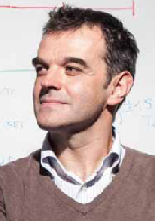
And since 2004, he has been guiding the robot spacecraft, Rosetta, and its landing craft, Philae, in their 6.4 billion km 6mission to the comet. In October 2014, Andrea and his team brought Philae down to a landing within 120 meters of the spot selected. Unfortunately, Philae did not anchor well and was blown into a shady place and its solar panel became useless. But Philae sent back valuable data in the 64 hours that it worked and there is hope that the solar panels will work again at a later position of the comet in its orbit around the sun.
2. Suzanne Topalian is a US physician and researcher who has worked on a new approach to tackling the menace of cancer. Even as a medical student, she says, she was fired with the idea of using the body’s immune system to turn on cancer cells, in place of the convention therapy of attacking the tumour with drugs or radiation.

The new drug that she helped pioneer belongs to a class called PD-1 inhibitors (Programmed cell Death inhibitors), which block a defense of cancer cells to prevent the body T-cells from acting. The drug has been approved for use in Japan and the US and analysts say it may become the cornerstone of cancer therapy in a few years.
3. Indian born Radhika Nagpal leads a team of engineers at Harvard University in the field of biology-inspired robotics. Taking a cue from a mentor when she was a student at MIT, Radhika built on the idea that the simple cell is the ultimate computer, with groups of cells taking cues from the environment and self assembling to perform complex tasks.

Radhika’s team has now got a swarm of 1024 small, three-legged robots, called kilobits, just a few centimeters wide and tall, and communicating with neighbours through infra-red light, to assemble themselves into different two dimensional shapes. This level of cooperative behavior in robots is seen as a remarkable achievement, which can be scaled up to create robotic teams that can rapidly move to deal with disasters or to aid environmental clean-up operations.
4. Sheik Hummar Khan was the heroic Sierra Leon doctor who succumbed to Ebola while treating patients during the outbreak in his country. He was part of the team that carried out the first genetic sequencing studies of the virus in Sierra Leone.
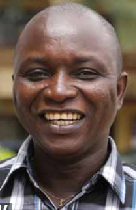
This research has shown how the virus is mutating and his team is installing sequencers all over West Africa to track its evolution. Hummar Khan had turned down attractive offers to work in Freetown or to teach abroad. He took the best precautions to protect himself but his empathy with patients, which extended to physical contact with survivors, may have been his undoing.
5. David Spergel, astrophysicist at Princeton, showed perseverance in pressing what he considered serious shortcomings in a discovery announced and being hailed at high quarters. A team led by John Kovac of the Harvard-Smithsonian Centre for Astrophysics in Cambridge, Massachusetts, had called a press conference to announce a probable detection of gravitational waves from deep within space, which supports the position that the early universe had undergone a brief but enormous expansion. David had a nagging feeling that there was something wrong with the evidence or the conclusion.
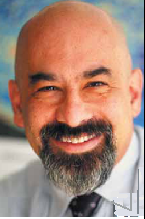
He soon worked out where the error lay and expressed his reservation in a lecture and again in a publication where he and others analysed the signals that Kovac et al had relied on, to show that the features seen could be explained by reasons other than that ancient expansion.
David’s voice was soon heard by the astrophysics community and the euphoria was replaced by suspicion that there had been a cosmic error, and the announcement was premature, at any rate.
6. Iranian born mathematician Maryam Mirzakhani, of Stanford University is the first woman recipient of the Fields Medal, regarded as the Nobel Prize for mathematics. She had been exposed, while a graduate student, to a novel and complex work of abstract surfaces that could be folded into shapes that contained holes. With little appreciation of the complexity, she wondered why the result could not be extended to more general surfaces
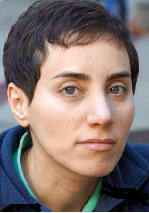
And she persisted, and ten years later, she co-authored a 172 page paper which describes a way, using wide ranging mathematical techniques, to do just this.
The award of the Field’s Medal to a woman is significant as there is a marked deficiency in the representation of women in the world of mathematics, apart from cultural bias.
7. 30 year old Pete Frates of Massachusetts, graduate from Boston College and basketball player and coach was diagnosed with Amyotrophic Lateral Sclerosis (ALS) in 2012. Pete lost the ability to speak or move, but he began advocacy and to raise funds for awareness of the disease. Pete, with his friend Pat Quinn of New York, are now credited as the creators of the Ice Bucket Challenge, an activity involving dumping a bucket of ice water on one's head to promote awareness of ALS, which went viral on social media during the summer of 2014. Over 17 million ice bucket videos have been posted and US$ 115 million have been collected.
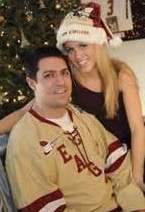
The drive has shown the need to get people involved and has caught the attention of other advocacy groups. The National Organization for Rare Disorders in Danbury, Connecticut, had held a seminar on viral fund-raising campaigns, and is planning a follow-up.
8. Koppillil Radhakrishnan, is head of the Indian Space Research Organisation (ISRO), and the success of India’s mission to Mars, in September, comes just before he retires, after forty three years of work on different projects of ISRO, from remote sensing satellites, Tsunami warning systems, the cryogenic engine.
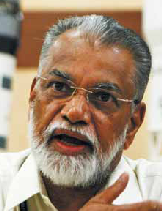
India’s success in its very first attempt is creditable as over half the missions so far have failed. Radhakrishnan plays down his role, “I was like the conductor of an orchestra,” he says. But the achievement has demonstrated India’s ability to develop and implement high-technology enterprises.
9. Masayo Takahashi is an ophthalmologist from Kobe, Japan, who has worked with Nobel laureate Shinya Yamanaka to coax pluripotent cells, that came from ordinary adult cells, to turn in sheets of retinal cells. Yamanaka had won the Nobel for the technique of reprogramming ordinary cells to become pluripotent, a method that makes it much easier to source than embryonic stem cells.

Takahashi has been working with getting stem cells to grow into retinal cells since over ten years. The work picked up speed with Yamanaka’s technique of the induced pluripotent stem cell and after a series of trials with mice and monkeys and regulatory tests, Takahashi’s lab grown sheet of cells was transplanted in the retina of a human patient in September this year.
10. Sjors Scheres, at the Labaoratory for Molecular Biology, Cambridge, UK, brought mathematics and computers to help find the way through the interiors of cells and genetic material. The method used in structural biology had been to first form crystals of gene regulating proteins and then to use X Ray scattering to probe the crystal structure. But cell material often defies crystalisation and a preferred technique is cryo-electron microscopy, or cryo-EM, a low temperature method where the specimens are in a more native environment. But the images in cryo-EM are blurred and the computations called for to generate clear images are laborious.

When methods were found to automate cryo-EM pictures, Scheres realized that normal computation of the data would not be feasible and he went to work on a computer programme. “We left him alone for a couple of years,” says Nobel laureate and colleague, Venki Ramakrishnan. And Sheres came up with RELION, a software package that Venki describes as “a perfect savior.”
Do respond to : response@simplescience.in
------------------------------------------------------------------------------------------